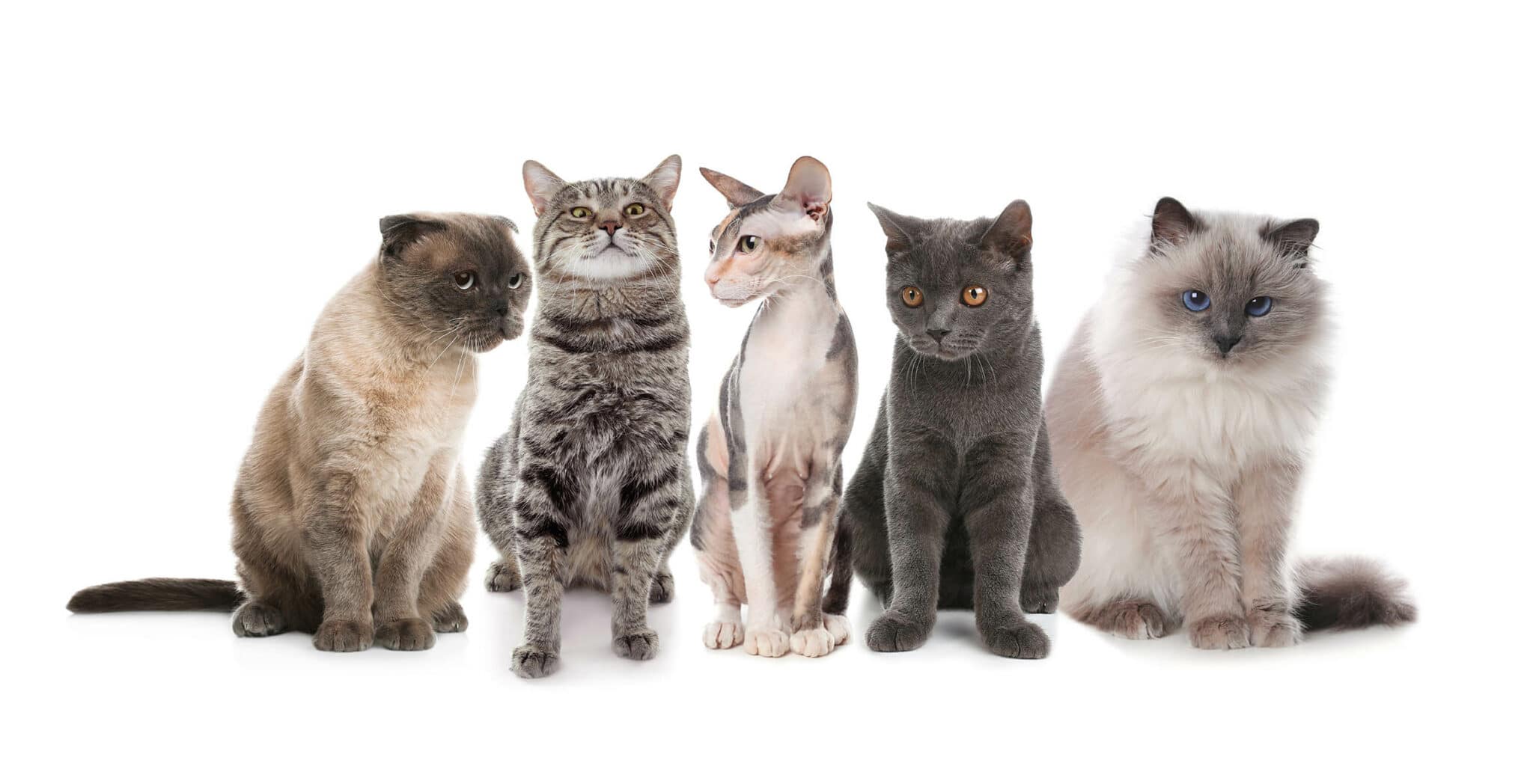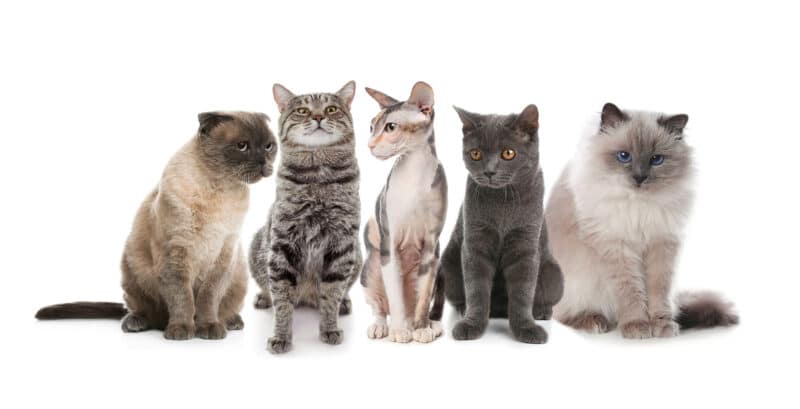Just about everyone can name a few dog breeds, such as Golden Retrievers, Labrador Retrievers, or Pit Bulls. In contrast, very few people know about different cat breeds, let alone identify a breed by looking at one.
Although it is much less common to talk about cat breeds, there are several, but there are fewer when compared to dogs. Like dogs, cat breeds can provide clues to the cat’s personality and common illnesses, though how you raise your cat matters more than anything else.
If you want to learn more about cat breeds, keep reading. In this article, we look at the number of domesticated house cats, wild breeds, and more.

How Many Domesticated House Cat Breeds Are There?
Although there are close to around 200 domesticated dog breeds, there are only about 40 to 71 cat breeds, depending on which cat association you refer to. The cat associations define breed characteristics and host cat competitions. The Cat Fanciers’ Association and the International Cat Association are the two most trusted cat associations.
The Cat Fanciers Association only recognizes 42 cat breeds, whereas the International Cat Association recognizes 71. There are also some more experimental breeds that are unrecognized, so it would be safe to say that there are between 42 and 100 cat breeds in the world.
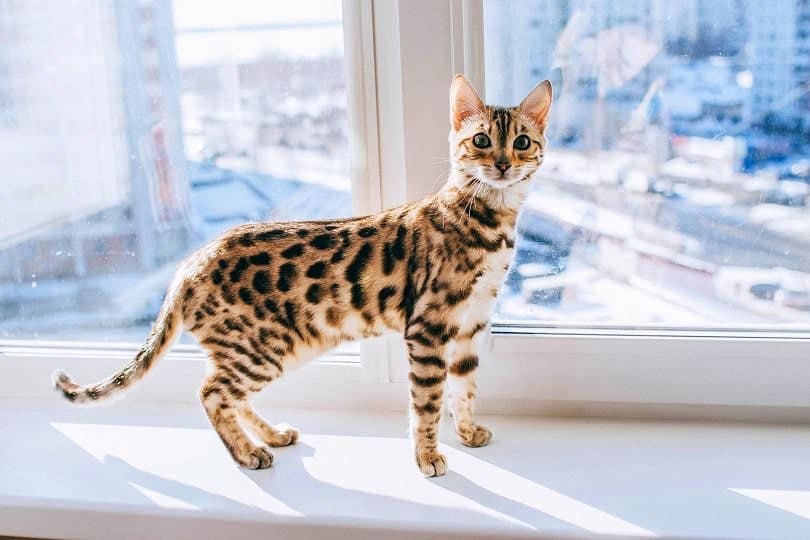
Some of the most popular cat breeds include:
- American Shorthair
- Bengal
- British Shorthair
- Domestic Longhair
- Domestic Shorthair
- Norwegian Forest Cat
- Persian
- Russian Blue
- Siamese
Although the breeds listed above are some of the most popular worldwide, there are certainly more cats, as we have already learned. Some of these cats, such as the Maine Coon, are domesticated yet still resemble their wild ancestors. Other cats on the other hand, simply look like soft, snuggly stuffed animals.
What Breed Is My Cat?
Although it is impossible to determine your cat’s breed without knowing their history, you may have a domestic long hair or short hair. In the United States, 95% of house cats are classified as domestic long hair or short hair breeds.
It is important to note that domestic long-haired and short-haired cats are distinct breeds from the American Shorthair. Interestingly, the most common cat breed is not recognized in terms of pedigree, but it just describes the domesticated cats we are most familiar with.
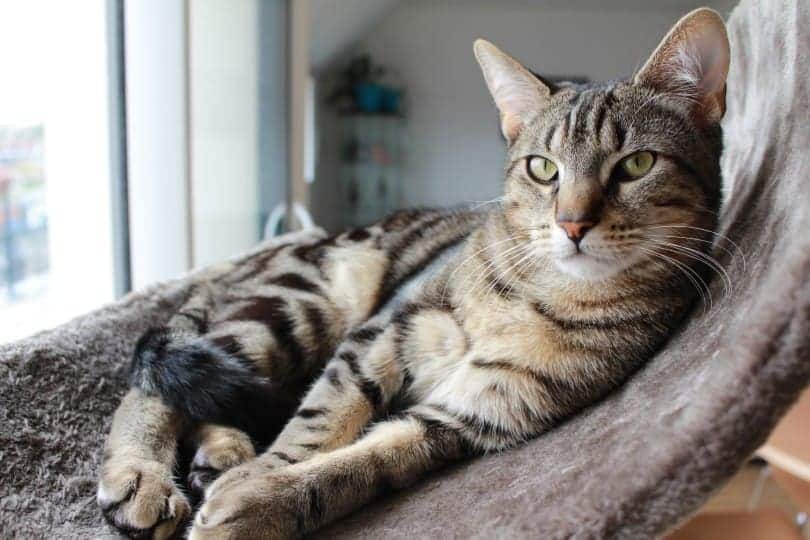
Can More Breeds Be Added?
The bulk of almost all registered breeds stay the same, but new breeds can be accepted. For example, the Cat Fanciers’ Association accepted the Lyokoi and Khao Manee to their registration in 2018.
Still, cats are not added to the registry lightly. Because all cats are bred from a similar line, there is a lot of debate about whether new breeds are unique or simply a continuation of the older line. This also explains why different registries list different numbers of official cat breeds.
Why Are There Fewer Cat Breeds Than Dog Breeds?
There are fewer cat breeds than dog breeds because humans have not taken the time to domesticate them for individual purposes. As you probably know, dogs were bred specifically for hunting or herding. For example, Australian Shepherds were bred for herding.
Cats, on the other hand, have not been bred for individual purposes like dogs. As a result, they are much more genetically similar to wild cats than dogs are to wolves. It also means that there are fewer breeds in general.
How Many Wild Cat Breeds Are There?
Even though the cats you have in your house are domesticated, learning about wild cats can be interesting. Wild cats are domesticated cats’ long-lost relatives. They have very similar genetics, but their genomes are altered to make them more suitable to live with humans. This includes more docile natures and memory-making abilities.
As odd as it may sound, there is a similar amount of wild cat breeds as domesticated breeds. According to multiple wild cat associations, about 36 types of wild cats are found worldwide. This includes the African Golden cat, the Cheetah, the Jaguar, and more.
Like domesticated house cats, there is some debate about the exact number of wild cats in the wild. For example, some registries list 40 species, whereas most only list 36. Interestingly, there is much more consistency regarding the number of wild cat breeds than domesticated house cat breeds.
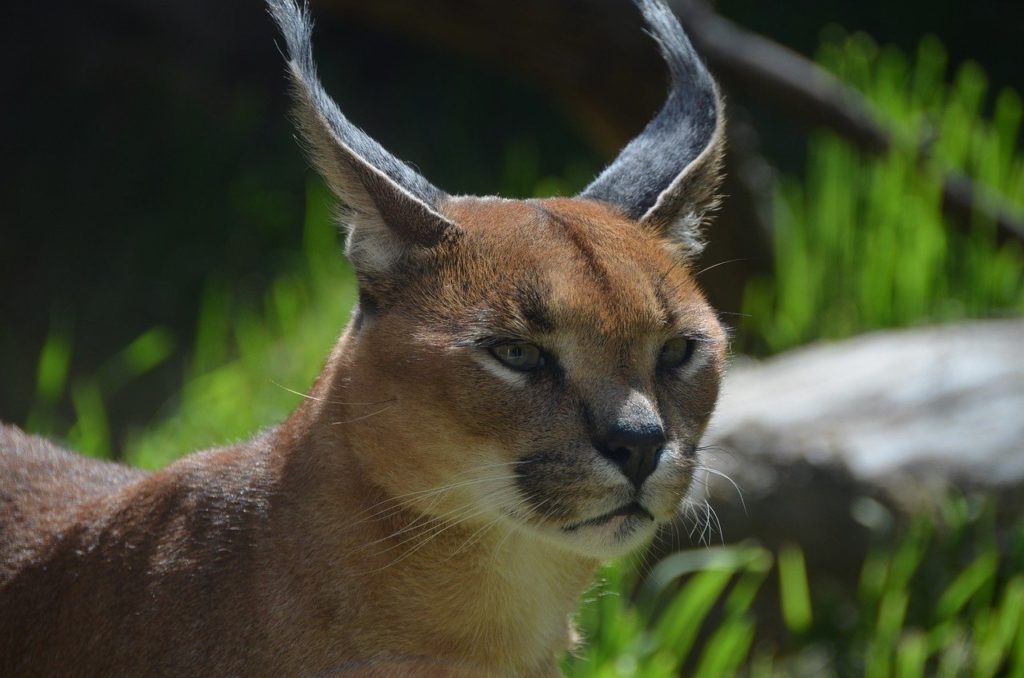
Population Distribution of Wild Cats
Wild cats can be found worldwide, though most people associate wild cats with Africa. This is because some of the most notorious wild cats are from Africa, such as lions. Wild cats live on nearly every continent, including Europe, Asia, North America, South America, Australia, and Africa.
You can even find them in Antarctica and the Arctic. However, many islands, like Australia, only have wild cats because humans brought them. In fact, many researchers wonder if the Americas only have cats due to settlers long ago.
Because of settlers, you can find cats everywhere around the globe today. Africa, for example, has some of the world’s oldest cats and are home to large and small cat varieties. Similarly, Asia has a very long cat history and is home to the largest cat, the Siberian tiger.
Wild cats are native to Europe, too, but Europe is only home to modern small cat varieties, such as the Scottish wild cat or Eurasian Lynx. Shockingly, larger cat breeds used to roam Europe as well.
North America and South America, however, have small and large cat varieties, but their large cats are not as big as those found in Asia or Africa. Still, the largest living cat in the world lives in Florida. It is a Liger named Hercules.
Australia is a very interesting country to look at regarding the cat population. Cats were not native to the continent, but settlers brought them over. As a result, many native species are endangered because of the explosion of feral cats.
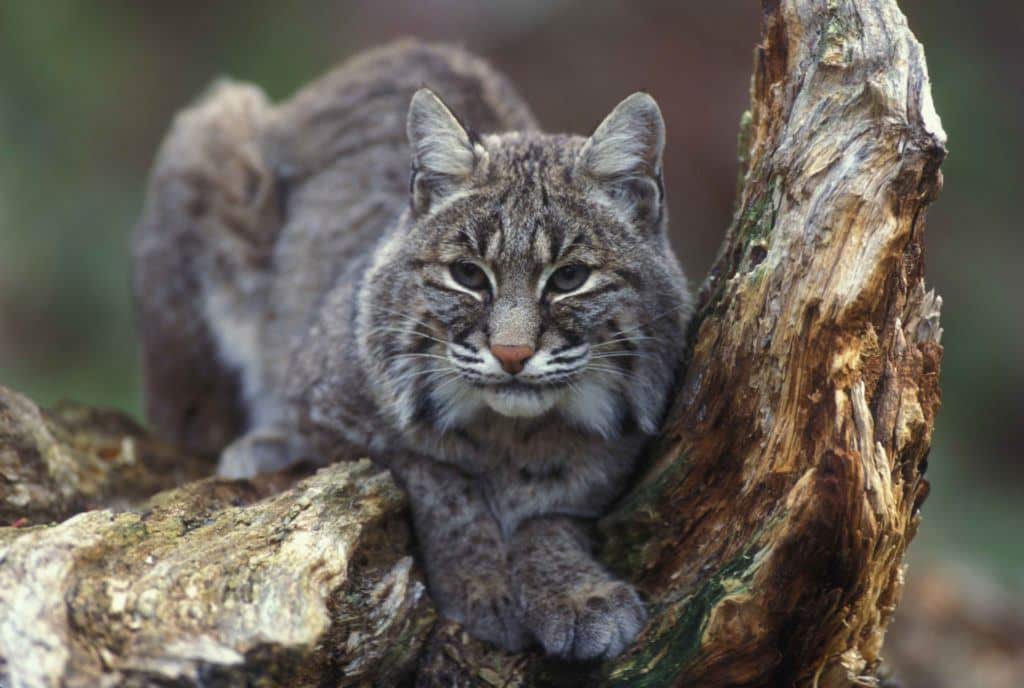
Relation to the Common House Cat
There are two classifications of wild cats: big and small. Initially, all cats evolved from big cats, such as Tigers, Panthers, and Lions. Some big cats began to evolve into smaller sizes. These cats belong to the Felidae family. Eventually, the family began to separate into a different genus.
This is where the domesticated cat comes in. Its genus appeared around 3.4 million years ago. The family includes wild cats, jungle cats, and domesticated cats. With this in mind, the common house cat has evolved from smaller varieties of wild cats, such as the Scottish wild cat.
Even though most domesticated house cats are like the smaller breed, there are still a lot of similarities between house cats and big cats. House cats and tigers tend to share 95.6% of DNA. This is an incredibly shocking fact that most people are excited and a bit scared to learn!
History of Feline Domestication
The history of feline domestication goes back centuries. It is believed that the first cats were domesticated around 7500 BCE in the Near East. Most scholars believe that the first cats were domesticated in ancient Egypt. Since then, domesticated cats have transformed into the most popular pets globally.
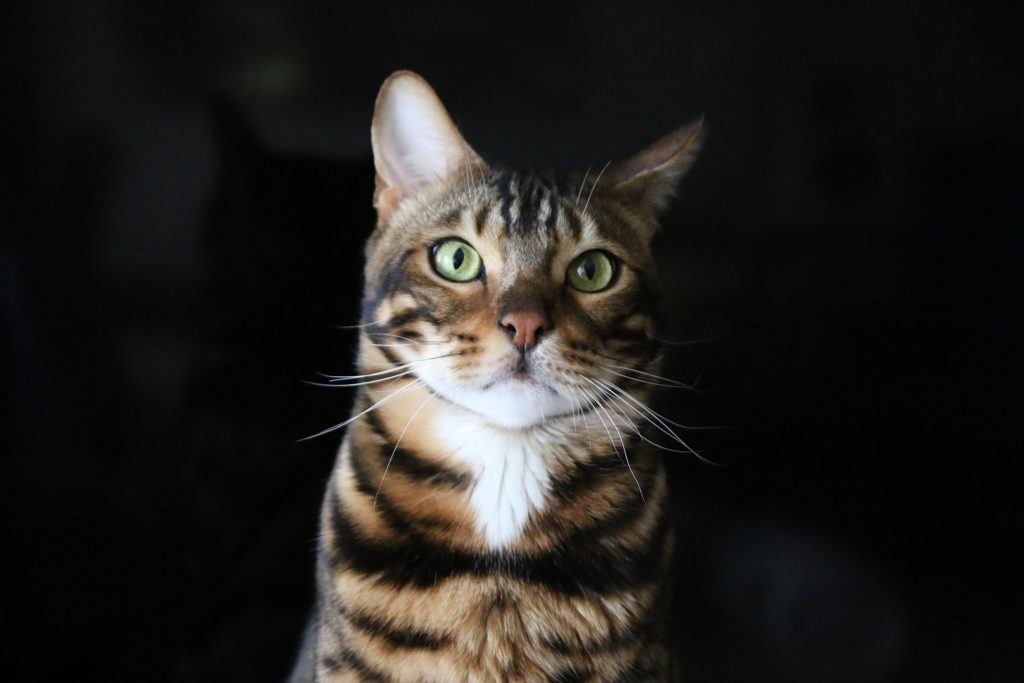
Sacred Origins
Although it is impossible to say precisely why cats were domesticated, many anthropologists and historians speculate that the ancient Egyptians domesticated cats since cats were venerated at that time. For example, many goddesses were depicted in cat form.
Interestingly, Egypt is not the only country where cats were considered sacred. For example, ancient Greek gods and goddesses were connected to the Egyptian gods, causing them to be depicted in cat form as well.
As time went on, cats were still associated with sacred events. For example, European artists in the Middle Ages associated cats with Christianity, the Virgin Mary, and the Holy Family. This suggests that cats were even connected with the sacred mythology of the more modern world.
By the time of Christianity, cats were securely domesticated.
Sailing to the New World
Once you get into the modern era, which roughly aligns with the reign of Queen Elizabeth I, cats were not so much associated with sacred rituals and origins in Europe anymore. Nevertheless, domesticated house cats could be found everywhere.
As Europeans started sailing to the New World, so did cats! Since cats killed rodents and mice, they were brought aboard ships to keep the rodent population at bay. Once the ships landed, the cats escaped and started populating the Americas.
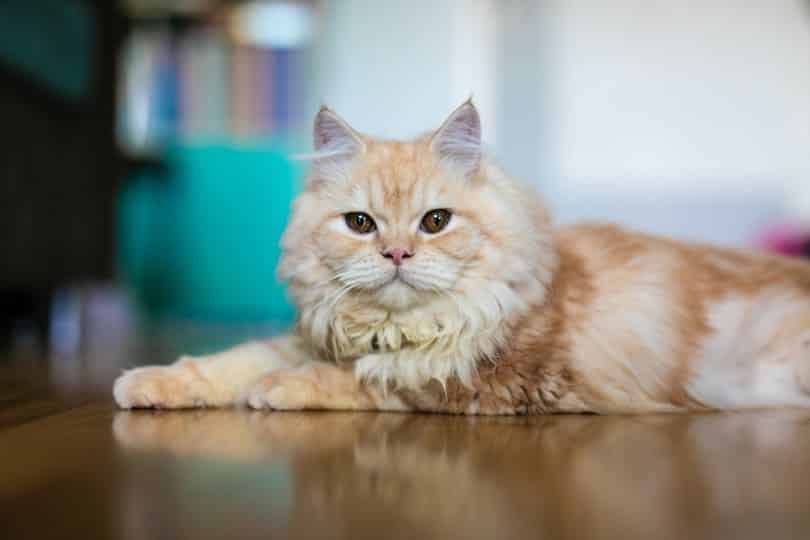
Domesticated Cats Today
Today, cats are one of the most popular pets around the globe, and around 34% of US homes include a furry feline companion. This adds up to about 90 million domesticated cats in total.
Interestingly, cats’ sacred or religious origins have not gone away completely. Although most people do not associate cats with the souls of the undead or gods and goddesses anymore, there are still a lot of superstitions about cats.
Most households, however, have cats because they are great companions and easy to care for. Although many people cite themselves as dog people over cat people, some owners prefer cats since they do not require as much attention or effort as dogs.
Final Thoughts
Even though your feline friend is non-aggressive and loves you to death, it has roots connected to wild cats. This explains why cats are obligate carnivores and like chasing mice.
Still, domesticated cats have evolved to be much less aggressive and develop more memories. This is exactly why you can keep a domesticated cat but not a tiger in your house. Although the domesticated cats from ancient Egypt are very different from the domesticated cats today, you still have the ancient populations to thank for your furry friend.
At the same time, you might wish you could give the ancients a stern lecture. After all, it is likely their religious veneration of cats that has caused all domesticated house cats today to have that sassy and entitled attitude that they are both loved and hated for!
You might also like:
- How Many Cats Are There On the Planet? What Stats Says
- Domestic Medium Hair Cat: Info, Pictures, Facts & Traits
Featured Image Credit: New Africa, Shutterstock

